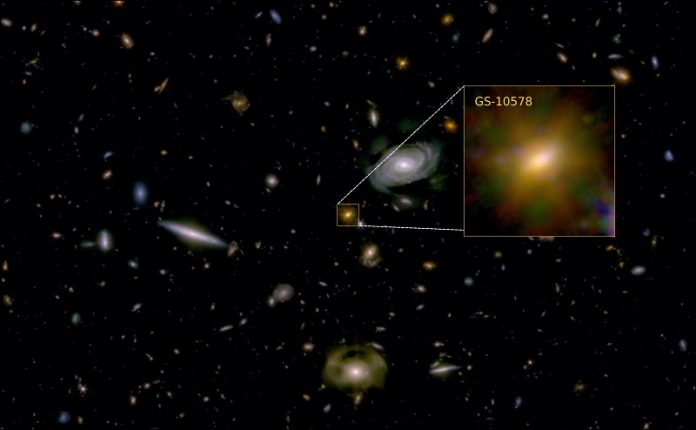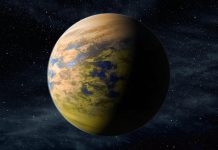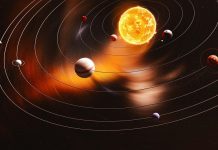
Astronomers using the powerful NASA/ESA James Webb Space Telescope have made a groundbreaking discovery: supermassive black holes can actually starve their host galaxies of the material they need to create new stars.
This discovery, published in Nature Astronomy, confirms long-held theories about the destructive influence of black holes on galaxies.
The research team, led by scientists from the University of Cambridge, used the Webb Telescope to study a galaxy that existed about two billion years after the Big Bang.
This galaxy, roughly the size of our Milky Way, is unique because it has stopped forming new stars, making it essentially “dead.” Despite its size, it’s no longer creating new stars at the rate you would expect.
“Previous observations told us this galaxy wasn’t forming many stars, which was puzzling given its size.
We suspected there was a link between the supermassive black hole at its center and the shutdown of star formation,” said Dr. Francesco D’Eugenio, one of the study’s co-lead authors from Cambridge’s Kavli Institute for Cosmology.
“But until we had Webb, we couldn’t study this galaxy in enough detail to confirm that connection.”
This galaxy, named GS-10578 but affectionately nicknamed “Pablo’s Galaxy” after a colleague who first studied it in detail, is massive for its time.
It’s about 200 billion times the mass of our sun, and most of its stars formed between 12.5 and 11.5 billion years ago.
“In the early universe, most galaxies were rapidly forming stars, so finding such a massive galaxy that had already stopped is surprising,” explained co-author Professor Roberto Maiolino from the Kavli Institute. “Given its size, the process that stopped star formation must have happened very quickly.”
Using the Webb Telescope, the researchers discovered that this galaxy is ejecting vast amounts of gas at speeds of about 1,000 kilometers per second—fast enough for the gas to escape the galaxy’s gravitational pull. These high-speed winds are being driven out of the galaxy by the supermassive black hole at its center.
While other galaxies with active black holes also show similar winds of hot gas, what makes “Pablo’s Galaxy” unique is the detection of a new, cooler type of gas that previous telescopes couldn’t see. This colder gas is denser and doesn’t emit light, making it nearly invisible to older telescopes. However, Webb’s advanced technology allows it to detect these dark gas clouds because they block some of the light from the galaxy behind them.
The amount of gas being expelled from the galaxy is more than what would be needed to continue forming new stars. In other words, the black hole is cutting off the galaxy’s supply of “fuel,” effectively starving it to death.
“We’ve identified the culprit,” said D’Eugenio. “The black hole is killing this galaxy by preventing it from getting the material it needs to make new stars.”
This discovery is significant because it provides the first direct evidence of a black hole stopping star formation in a galaxy. Previous models had predicted this effect, but until now, it hadn’t been directly observed. Interestingly, the stars in this galaxy are still moving in an orderly fashion, suggesting that the end of star formation doesn’t always result in a chaotic, turbulent galaxy.
“Webb is giving us a completely new way to study the early universe and the evolution of galaxies,” said Maiolino. “This is just the beginning of what we can learn.”
Future observations using the Atacama Large Millimeter/Submillimeter Array (ALMA) will delve deeper into the coldest, darkest parts of the galaxy, to see if any remaining fuel for star formation is hidden away and to further understand the black hole’s impact on the surrounding galaxy.



